Still More Whiskeys We’re Revisiting During Quarantine
Photos via Brown-Forman, Buffalo Trace, Glenmorangie, New Riff Distilling, Wild Turkey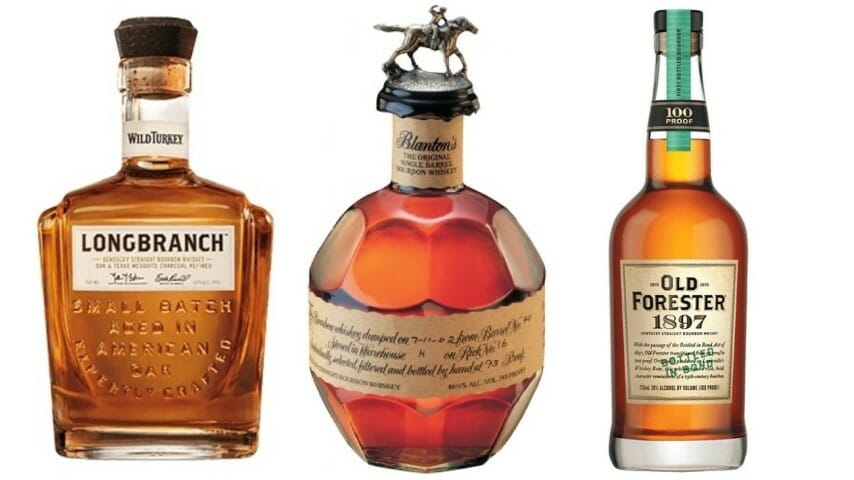
Paste readers seemed to appreciate our repeated dives back into our liquor collection as we’ve been reevaluating whiskeys during quarantine, so we’re at it again. Here are some more bottles I’ve been digging out from the back of the liquor cabinet to see how they’re faring.
If you’re anything like me, you’re probably thanking your lucky stars or deity of choice right now for the fact that you were already maintaining a very well-stocked home bar before the world descended into its current, apocalyptic state. Because if there’s one thing you want to make sure you have on hand during the new societal age of social distancing, it’s … toilet paper. But it doesn’t hurt to have some whiskey, either.
With that thought in mind, during the ongoing coronavirus (COVID-19) pandemic, I’ve been returning to the back shelves of my liquor cabinet with more regularity, re-sampling some of the various bottles of whiskey I haven’t necessarily been thinking about recently. It’s been a good opportunity to revisit some old classics and bottles I’d half forgotten about, while possibly finishing off some of those pesky bottles that have been hanging on to their last two ounces for a year or more.
Here, then, are five more interesting bottles of whiskey I’ve been revisiting during quarantine. If your state’s liquor stores are still in operation, consider picking up some quarantine whiskey for yourself!
1. Old Forester 1897 Bottled-in-Bond BourbonMSRP: $50-55
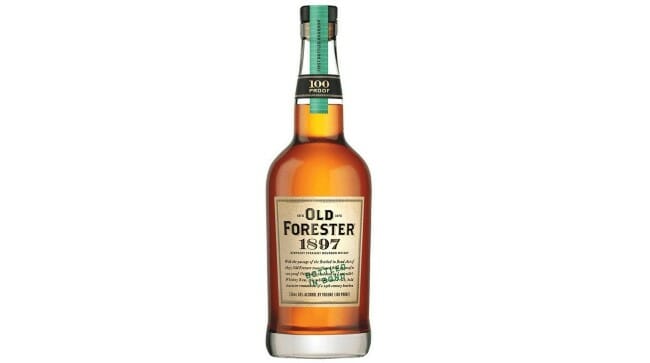
Both whiskey critics and bourbon geeks have been regular boosters of Old Forester’s “Whiskey Row” series of date-based premium bourbons since they were introduced a few years back, but if you’re paying any attention at all, you’ll quickly notice that the lion’s share of the attention is directed at the 1920 Prohibition Style and the 1910 Old Fine Whisky. Comparatively lost in the shuffle are the two other expressions: 1870 Original Batch and 1897 Bottled-in-Bond.
There are some obvious reasons for this. For one, the proof points of those whiskeys are already mirrored by the similarly non-age-stated flagship Old Forester 86 proof and the 100-proof Old Forester Signature, both of which can be had for less than half the price. And secondly, the $50-ish price point of a whiskey like Old Forester 1897 can make it difficult to make a value argument for it when the 1920’s retail pricing is often almost identical, and with an extra 15 proof points to boot. That makes 1897 one of those brands that seems to be caught between better value options, so it’s only natural that it gets overlooked.
With that said, however, it’s also one of the most versatile bourbons that Brown-Forman produces, and has proven over time to be one of my very favorite cocktail bourbons. It hits a sweet spot in the classic Old Forester flavor profile that, for whatever reason, makes my ideal version of cocktails such as the Black Manhattan.
On the nose, this NAS 100-proof bourbon is full of dark toffee, banana, cornbread and slightly younger oak notes, along with a little bit of musty rye. In comparison with the 1920, its palate is less explosive and spicy, instead lingering on more gentle sweetness and notes of banana custard, orange peel, toffee, vanilla pudding, clove and blackberry jam. The oak here again feels slightly green, but the bourbon has the richness and sturdiness to be spotlighted in an “up” drink without completely dominating it. It really seems like it was built for cocktails more than any other purpose.
With MSRPs the way they are, though, I can see why discussion so often revolves around the 1920 instead. If the price tag on this one could somehow drop $10, it would likely have an easier time claiming a niche.
2. New Riff Bottled in Bond BourbonMSRP: $40-45

Might as well stay on the bottled-in-bond train for the moment, right? This is the already classic flagship bourbon of Kentucky’s quickly rising New Riff Distilling, a whiskey I’ve always felt when sampling in the past felt like it fit right in alongside the classic bourbons of distilleries more than 100 years its senior. It’s a high-rye mash bill that weighs in at 65% corn, 30% rye and 5% malted barley, aged the requisite four years for bottled-in-bond status and then bottled at the usual 100 proof, without chill filtration. There’s nothing any more unusual to it than that—the novelty of the experience is meant to be tasting something that is a very common flavor profile in Kentucky, but made by a distillery that can’t claim to have been around for more than a century.
The results are rock solid. On the nose, this one first hints at cornbread and dusty rye, with a suggestion of dryness and some anise-like spice, but also a hint of richer butterscotch underneath. There’s notably little ethanol on this nose, considering both the age statement and proof.
On the palate, New Riff Bottled in Bond proves to be immediately approachable, with notes of light caramel and corny sweetness, balanced by copious rye spice. It possesses a nice, round texture and flavors that really embrace the rye grain on repeated sips: Floral qualities, into pine and mint, along with some pepper and leather. There’s a light oakiness and a ribbon of vanilla bean, but all in all this one is very much a celebration of the rye grain as it functions with the structure of a bourbon. It’s an eclectic, versatile sort of 100-proofer that is an easy sipper or capable cocktail spirit.
3. Blanton’s Single Barrel BourbonMSRP: $60-70
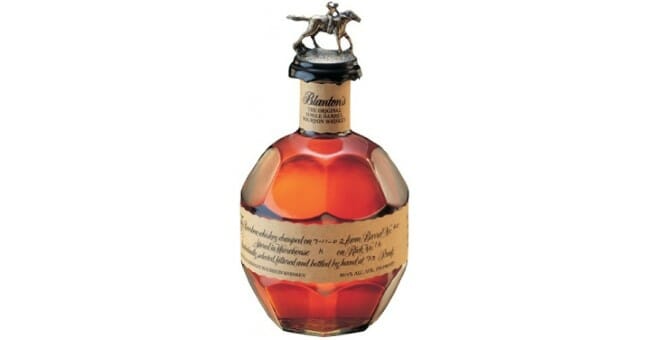
Oh, Blanton’s. It’s hard to even objectively talk about a brand like Blanton’s at this point. When I was first getting into American whiskey a decade ago, it was a staple of every package store shelf. Hell, you could find bottles of Blanton’s in pharmacies and grocery stores, gathering dust. It was known to whiskey geeks as a pioneer of single barrel bourbons, but it was by no means the kind of thing that people were standing in line for hours to acquire … or selling at vast mark-ups on the secondary market.
Then the Buffalo Trace mania began, flowing downward from the direction of Pappy Van Winkle, and suddenly Blanton’s was flying off the shelves. Today, it enjoys a mythic status among aspiring whiskey geeks, although it’s obviously very hard to live up to that status—almost no bourbon would be worthy of all the attention that is now afforded to Blanton’s, making it something of a victim of its own hype. This year, Sazerac Co. only increased that hype by bringing a few new Blanton’s varieties to the U.S. from international markets for the first time: Blanton’s Gold and Blanton’s Straight From the Barrel. They’re whiskeys that are interesting in theory and less so in practice, given the ultra-low quantities and ultra-high pricing and hype involved. You’ll probably never see a bottle of either in person, so let’s instead focus on simply evaluating the liquid inside the somewhat more attainable core expression of Blanton’s found in the U.S.—a single barrel, non-age-stated (usually said to be 6-8 years old) bourbon bottled at 93 proof. MSRP, as noted above, is usually between $60-70, but good luck finding it at those prices when many package stores now shamelessly sell Blanton’s for $200 per bottle, a price-gouging phenomenon we recently wrote about at length.
How does the actual whiskey hold up, though?
On the nose, I get unmistakable notes of caramel and creamy vanilla, along with orange citrus and some slightly more delicate notes of florals and clove. There’s a slightly “dusty” or musty quality to the nose as well, reminiscent of the maltiness of strong black tea.
On the palate, this is fairly sweet and very smooth in texture, with a nicely creamy mouthfeel and flavors that initially rush toward vanilla and butterscotch syrup. There’s a red fruity quality, more “strawberry” than cherry, per se, and a largely absent level of heat, thanks to the low proof. Residual sweetness is moderate—it trends toward the sweeter side, but it’s not overbearing, while a bit of drying oak on the back end brings everything together. There’s not much exotic here, although the note of strawberry or raspberry is the closest thing to a stand-out flavor in this particular bottle.
Which is all to say: Solid bourbon, although pretty much everything you’ll find from the major Kentucky distilleries in the $60-70 range should be able to qualify as “solid bourbon.” At MSRP, Blanton’s represents fair value for those who want a gentle-drinking bourbon rather than a more flavorful or assertive profile you’d get with a higher proof. For $200, it’s a ludicrous gouging that absolutely no one should pay. We’re telling this to you straight here: This is a fine whiskey at MSRP—although there are certainly better values out there—and a massive rip-off if you’re paying secondary prices for it. Don’t get suckered into dropping $100 or more on the likes of this.
4. Glenmorangie Quinta Ruban 14 YearMSRP: $60
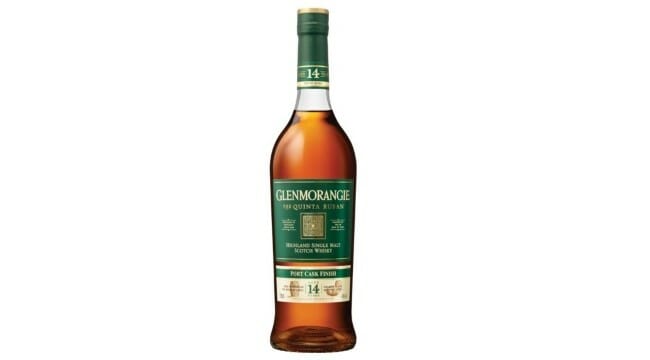
Consider for a moment the fact that this 14-year-old, port-finished single malt carries the same MSRP and roughly the same proof (92 proof/46% ABV) as the preceding Blanton’s, and then take a wild guess as to which represents the better overall value. Oh, and this one will actually be found at MSRP, as well.
This is an expression that has really grown on me as I’ve gone back to revisit it over the last year, and I credit experiences like my tasting of the core Dalmore lineup with helping me to recognize new flavors that I now find myself enjoying in other malts, including this one. In terms of specs, this is a classic “finished” Highland malt—Glenmorangie’s single malt matures in American used oak for 10 years, before transferring to ruby port pipes for an additional four years. This expression was redesigned with a higher age statement back in 2019, giving it more time for port maturation, and the results are quite nice.
On the nose, this single malt is quite “toasty,” with some of the dark fruitiness that you’d expect from its port pipe maturation meeting toffee and buckwheat honey, along with brighter notes of citrus and plum. It’s initially biscuity/malty on the palate, with dark stone fruit (plum) and a wisp of smokiness, before segueing into lots of cinnamon. Roasty flavors then take on a greater dimension on repeat sips, with a very nice coffee note, which pairs well with toasted bread and fruit preserves to vaguely suggest a full English breakfast. Slightly earthy, but predominantly rich and fruity, with an undercurrent of roast, this is a characterful dram that probably benefits significantly from the slightly higher strength of 46% ABV. Whoever chose to present it at that proof, rather than 40% or 43% ABV, made the right call.
5. Wild Turkey Longbranch BourbonMSRP: $35-40
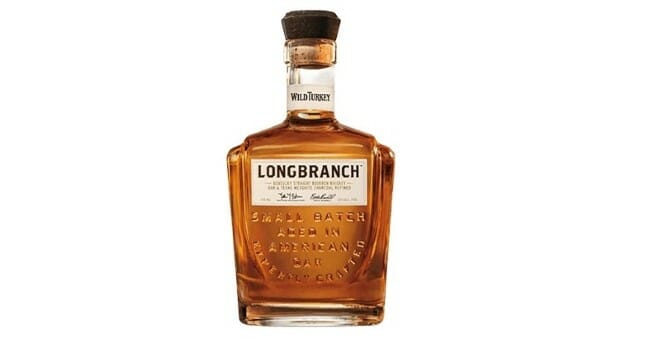
When ads for this Wild Turkey product co-designed by master distiller Eddie Russell and actor Matthew McConaughey first began running in 2018, it was clear that Wild Turkey was making an overture to a different sort of bourbon consumer. As the distillery has worked for years to shed the rough-and-tumble imagery that was associated in pop culture with the term “Wild Turkey,” here was a premiumized (but still fairly affordable), approachable bourbon from a major Hollywood star, with a respectable level of age (8 years, which is no small thing for Wild Turkey), clearly intended for neat drinking with its low 86 proof. Although similar in structure to the similarly priced Russell’s Reserve 10 Year, this felt more like a way to bring a microcosm of the flavors of the venerable Wild Turkey 101—a perennial whiskey geek favorite, but too punchy for newcomers—to the masses, with an additional sheen of sophistication promised by its oak and mesquite charcoal filtration. Or in other words: This was clearly designed to be a bourbon that few would be ordering as a shot in a dive bar.
The charcoal filtration is an especially interesting element—something not seen in other Wild Turkey bourbons, it’s unclear how big a role it’s really meant to play in the eventual flavor profile. Revisiting this dram, though, it’s clear that this is an extremely approachable way to introduce people to Wild Turkey.
On the nose, Longbranch is sweet and toasty, hinting at honey, caramel and vanilla frosting—angel’s food cake-like. There’s a hint of rye, and then something like lightly toasted coconut and mint. It’s a solid nose in terms of assertiveness for an 86 proof bourbon, which too often are lacking in character.
On the palate, this has a very slightly smoky savoriness that perhaps one might attribute to the mesquite charcoal, but that might be me reading more into this particular bourbon than is actually there—or the slightly savory nature of Turkey’s bourbon to begin with. Regardless, it’s a subtle note, flowing into rich brown sugar, coconut and vanilla frosting. This is pretty sweet overall, and almost slightly syrupy, but is still very easy to drink. There’s an element of sweet mint, a hint of spicy oak, and a heat that appears for the briefest moment before disappearing. This absolutely feels like something one might use to hook a new whiskey drinker, which is probably exactly what is intended.
Jim Vorel is a Paste staff writer and resident brown liquor geek. You can follow him on Twitter for more drink writing.







































